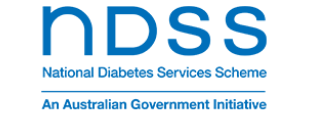Diabetes management plan – a guide for all staff
A school should work closely with a student’s parents or carers and the clinical treating team to determine how the school will support the student to effectively manage their type 1 diabetes. Upon school enrolment or at diagnosis, parents or carers should provide the school with the student’s diabetes management plan.
The diabetes management plan should be used to determine the types of supports the school may put in place to assist the student’s participation in school activities. These supports should be discussed and agreed upon by the principal (or proxy), the student’s parents or carers, and student (where appropriate). Ideally the designated staff should be involved in this consultation. Once these supports and reasonable adjustments are agreed, the school will implement the measures to support the student at school.
The diabetes management plan includes a section for the student’s parents or carers to provide consent, which authorises school staff to provide the agreed support to the student and to share key information with others (such as the clinical treating team) as necessary and reasonable to support the student. Once the consent is signed by the student’s parents or carers and the school, this gives the school the necessary authorisation to provide the agreed support and reasonable adjustments including the physical actions of assisting with blood glucose monitoring and administering insulin or supervising its administration. When aspects of the student’s diabetes management plan are changed by the clinical treating team or when support in the school environment is changed, the consent given by parents and carers should be updated to reflect these changes.
Designated staff play a critical role in ensuring that the student’s diabetes management plan is followed in the school environment. It is important that all staff within the school are aware of who the designated staff members are, so they know who to contact should a student require support.
As part of the ongoing support provided to students with type 1 diabetes designated staff may need to contact the student’s clinical treating team for advice and guidance. Staff may also require training on supports that have been agreed upon, including training on the use of medical equipment and administering medication. >> Read more about the Diabetes in Schools training program
Additionally, the principal and designated staff member(s) will need to ensure that medications are stored safely, in accordance with the school’s medications policy, and in a way that takes account of the student’s needs as outlined in the diabetes management plan.
In some state and territories, some schools may be required to prepare a student health plan or action plan that details the processes and steps that the school will take in the day-to-day management of the student’s type 1 diabetes (and other health conditions, where relevant). Where such documents exist, they will need to reflect the student’s diabetes management plan and ensure that the full range of supports and adjustments agreed upon, are appropriately documented and communicated to staff within the school as required.
Diabetes management and actions plans
A student’s diabetes management plan is an essential document that that will guide how schools can support students to learn and participate fully in their school experience.
The diabetes management plan will usually be developed by the student’s clinical treating team in collaboration with the student and parents or carers. A student’s diabetes management plan will outline their monitoring, insulin and daily type 1 diabetes management needs while at school. The plan should provide schools with clear information about when a student requires supervision or support with key tasks, such as checking their blood glucose or taking their insulin at school.
A diabetes management plan should include a diabetes action plan – this is a tailored plan written by the student’s clinical treating team for the urgent management of blood glucose highs and lows outside a student’s target range.
Diabetes management plans will differ in format and detail in different states and territories, and may vary for different clinical treating teams.
Below are links to plans typically used in different states. Families should take guidance from their clinical teams about which diabetes management plan will be prepared for their child.










